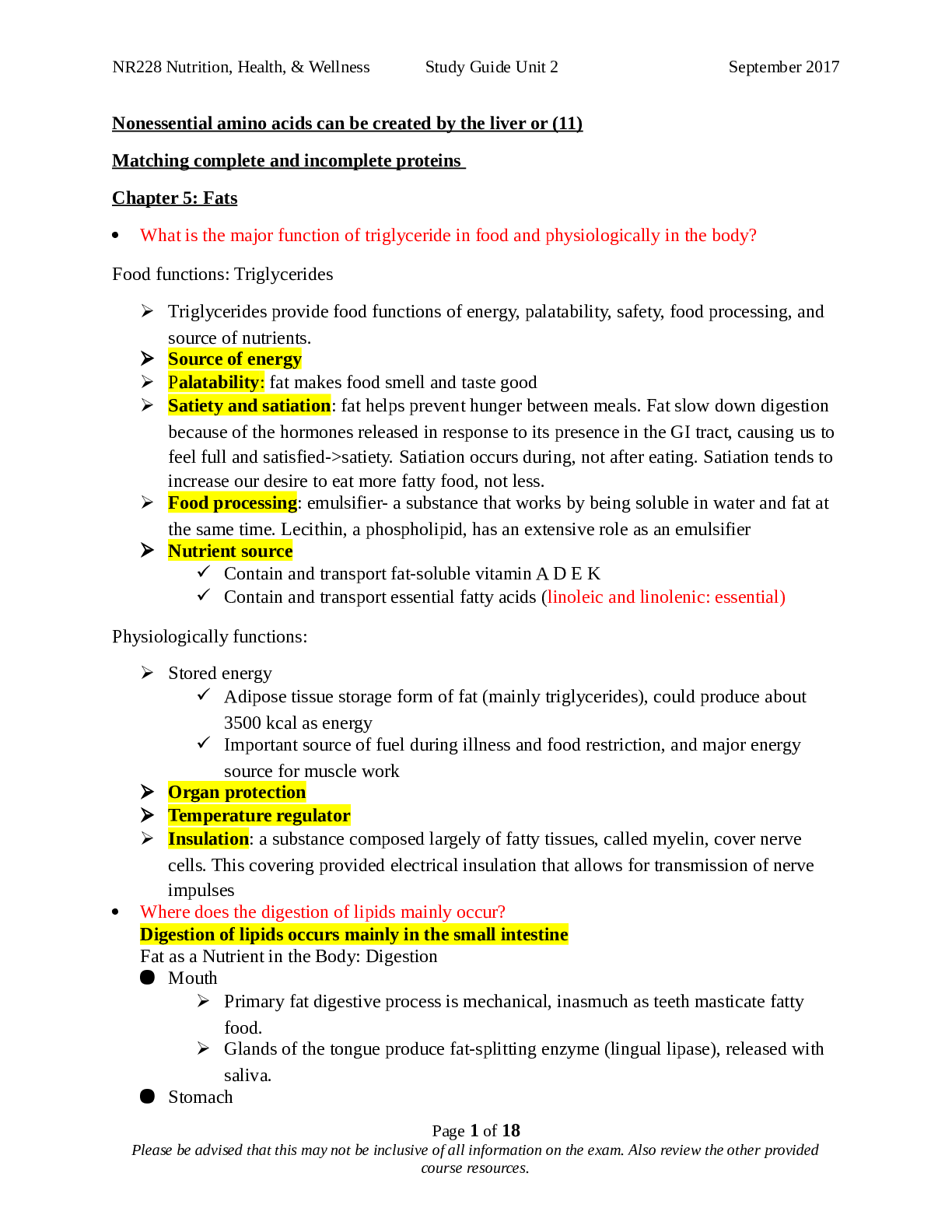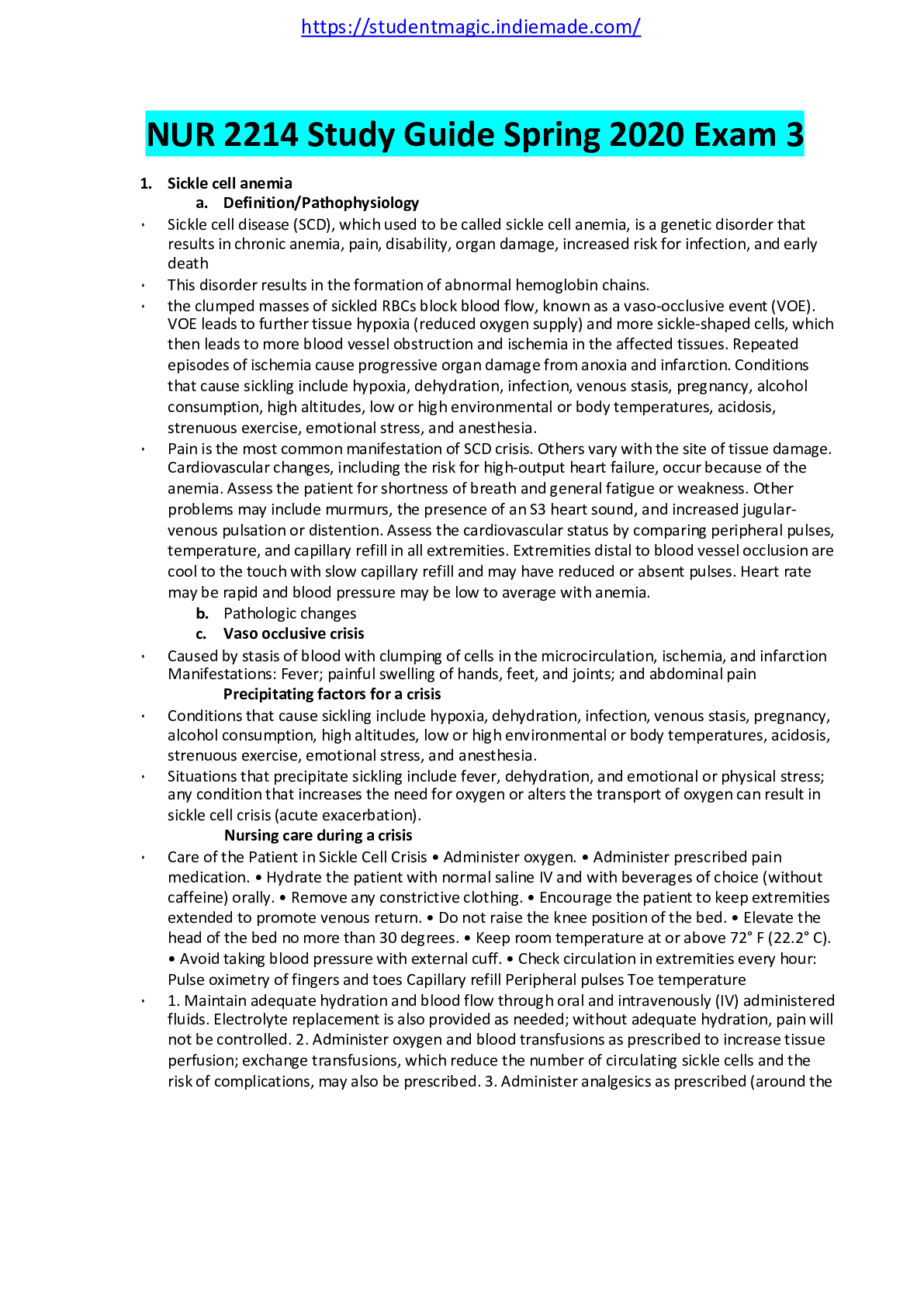*NURSING > STUDY GUIDE > Final Exam Study Guide AP4 (All)
Final Exam Study Guide AP4
Document Content and Description Below
Final Exam Study Guide AP4 The Digestive System 1. Describe the function of the digestive or list differentiate between organs of the alimentary canal and accessory digestive organs. The digestiv... e system takes in food, breaks it down into nutrient molecules, absorbs these molecules into the bloodstream, and then rids the body of the indigestible remains. Digestive system organs fall into two main groups: the alimentary canal and the accessory organs (pp. 852–853). The alimentary canal, or gastrointestinal (GI) tract, is the continuous muscular digestive tube that winds through the body digesting and absorbing foodstuff; its organs include: the mouth, pharynx, esophagus, stomach, small intestine, and large intestine. Accessory digestive organs aid digestion physically and produce secretions that break down foodstuff in the GI tract; the organs involved are the teeth, tongue, gallbladder, salivary glands, liver, and pancreas. 2. Describe the composition and functions of saliva, and explain how salivation is regulated. Explain the mechanisms of chewing and swallowing. •Saliva is largely water—97 to 99.5%—and therefore is hypo osmotic. As a rule, saliva is slightly acidic (pH 6.75 to 7.00), but its pH may vary. Its solutes include electrolytes (Na, K, Cl, PO43, and HCO3) the digestive enzymes salivary amylase and lingual lipase (both optimally active at an acid pH); the proteins mucin (mu sin), lysozyme, and IgA; and metabolic wastes (urea and uric acid). When dissolved in water, the glycoprotein mucin forms thick mucus that lubricates the oral cavity and hydrates foodstuffs. •The intrinsic salivary glands secrete saliva continuously in amounts just sufficient to keep the mouth moist. But when food enters the mouth, the extrinsic glands are activated and copious amounts of saliva pour out. The average output of saliva is 1000–1500 ml per day. Salivation is controlled primarily by the parasympathetic division of the autonomic nervous system. When we ingest foods, chemoreceptors and mechanoreceptors in the mouth send signals to the salivatory nuclei in the brain stem Mastication, or chewing, begins the mechanical breakdown of food and mixes the food with saliva (p. 866). Deglutition, or swallowing, is a complicated process that involves two major phases (p. 866; Fig. 23.13). 1. The buccal phase is voluntary and occurs in the mouth where the bolus is forced into the oropharynx. 2. The pharyngeal-esophageal phase is involuntary and occurs when food is squeezed through the pharynx and into the esophagus. 3. List the major functions of the large intestine, and describe the regulation of defecation and the role of fiber in the diet. The large intestine absorbs water from indigestible food residues and eliminates the latter as feces. Feces forced into the rectum by mass movements stretch the rectal wall and initiate the defecation reflex. This spinal cord–mediated parasympathetic reflex causes the sigmoid colon and the rectum to contract, and the internal anal sphincter to relax. As feces are forced into the anal canal, messages reach the brain allowing us to decide whether the external (voluntary) anal sphincter should be opened or remain constricted to stop feces passage temporarily. If defecation is delayed reflex contractions end within a few seconds, and the rectal walls relax. With the next mass movement, the defecation reflex is initiated again—and so on, until the person chooses to defecate or the urge to defecate becomes unavoidable. Fiber is an important element of proper digestion. Once the enzymes have broken down the food, fiber binds to the food (& toxins) in your intestines and keeps the waste moving through. Too much fiber and things may move faster than you'd like. Too little and the waste can move through too slowly and build up in your system. Fiber also helps our bodies absorb beneficial minerals within our food, it helps fight free radicals, supports healthy intestinal bacteria, and helps us maintain healthy cholesterols levels already within normal limit. 4. State the roles of bile and of pancreatic juice in digestion, predict how the entry of pancreatic juice and bile into the small intestine is regulated, OR list the enzymes involved in chemical digestion. Bile is a fat emulsifier. Bile does not usually enter the small intestine until the gallbladder contracts when stimulated by cholecystokinin. Pancreatic juice consists mainly of water and contains enzymes that break down all categories of foodstuffs and electrolytes. Secretion of pancreatic juice is regulated by local hormones and the parasympathetic nervous system. Pancreatic juice is regulated by neural stimuli and, more importantly, hormones (cholecystokinin and secretin). When no digestion is occurring, the hepatopancreatic sphincter (guarding the entry of bile and pancreatic juice into the duodenum) is closed and the released bile backs up the cystic duct into the gallbladder, where it is stored until needed. •salivary amylase - Chemical digestion of carbohydrates begins in the mouth, where salivary amylase breaks large polysaccharides into smaller fragments. •Pepsin - secreted by the chief cells, begins the chemical digestion of proteins in the stomach. •Rennin - is produced in infants and breaks down milk proteins. •Pancreatic enzymes - such as trypsin and chymotrypsin, further break down proteins in the small intestine. •The brush border enzymes - carboxypeptidase, aminopeptidase, and dipeptides work on freeing single amino acids in the small intestine. •Lipases are secreted by the pancreas and are the enzymes that digest fats after they have been pretreated with bile. 5. Describe the composition of gastric juice, identify the cell types responsible for secreting its components, and explain the regulation of gastric secretion and stomach motility. Mucous neck cells, found in the upper, or “neck,” regions of the glands, produce a thin, soluble mucus Parietal cells - found mainly in the middle region of the glands, simultaneously secrete hydrochloric acid (HCl) and intrinsic factor. Although the parietal cells appear spherical when viewed with a light microscope, they actually have three prongs that bear dense microvilli (they look like fuzzy pitchforks!). This structure provides a huge surface area for secreting H and Cl into the stomach lumen. HCl makes the stomach contents extremely acidic (pH 1.5–3.5), a condition necessary for activation and optimal activity of pepsin. The acidity also helps in food digestion by denaturing proteins and breaking down cell walls of plant foods, and is harsh enough to kill many of the bacteria ingested with foods. Intrinsic factor is a glycoprotein required for vitamin B12 absorption in the small intestine. Chief cells occur mainly in the basal regions of the gastric glands. The chief cells produce pepsinogen, the inactive form of the protein-digesting enzyme pepsin. Chief cells also secrete insignificant amounts of lipases (fat-digesting enzymes). Enteroendocrine cells - (“gut endocrine”), typically located deep in the gastric glands, release a variety of chemical messengers directly into the interstitial fluid of the lamina propria. Neural and hormonal mechanisms Stimulatory and inhibitory events occur in three phases: 1. Reflex phase (cephalic): few minutes prior to food entry: smell/taste 2. Gastric phase: 3–4 hours after food enters the stomach 3. Intestinal phase: brief stimulatory effect as chyme enters the duodenum, followed by inhibitory effects (enterogastric reflex and enterogastrones). ..................Continued...... [Show More]
Last updated: 1 year ago
Preview 1 out of 13 pages
Instant download

Instant download
Reviews( 0 )
Document information
Connected school, study & course
About the document
Uploaded On
Feb 22, 2021
Number of pages
13
Written in
Additional information
This document has been written for:
Uploaded
Feb 22, 2021
Downloads
0
Views
46



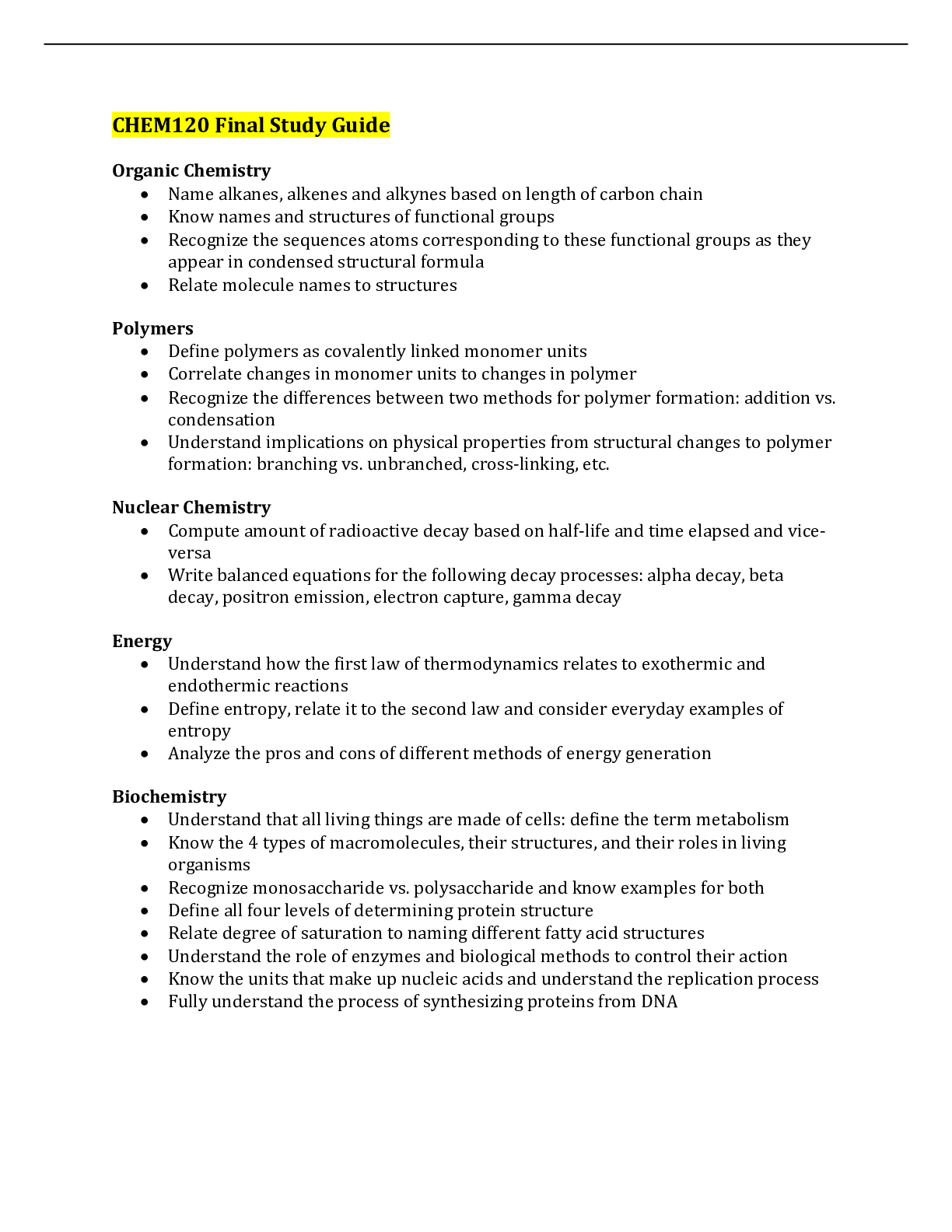
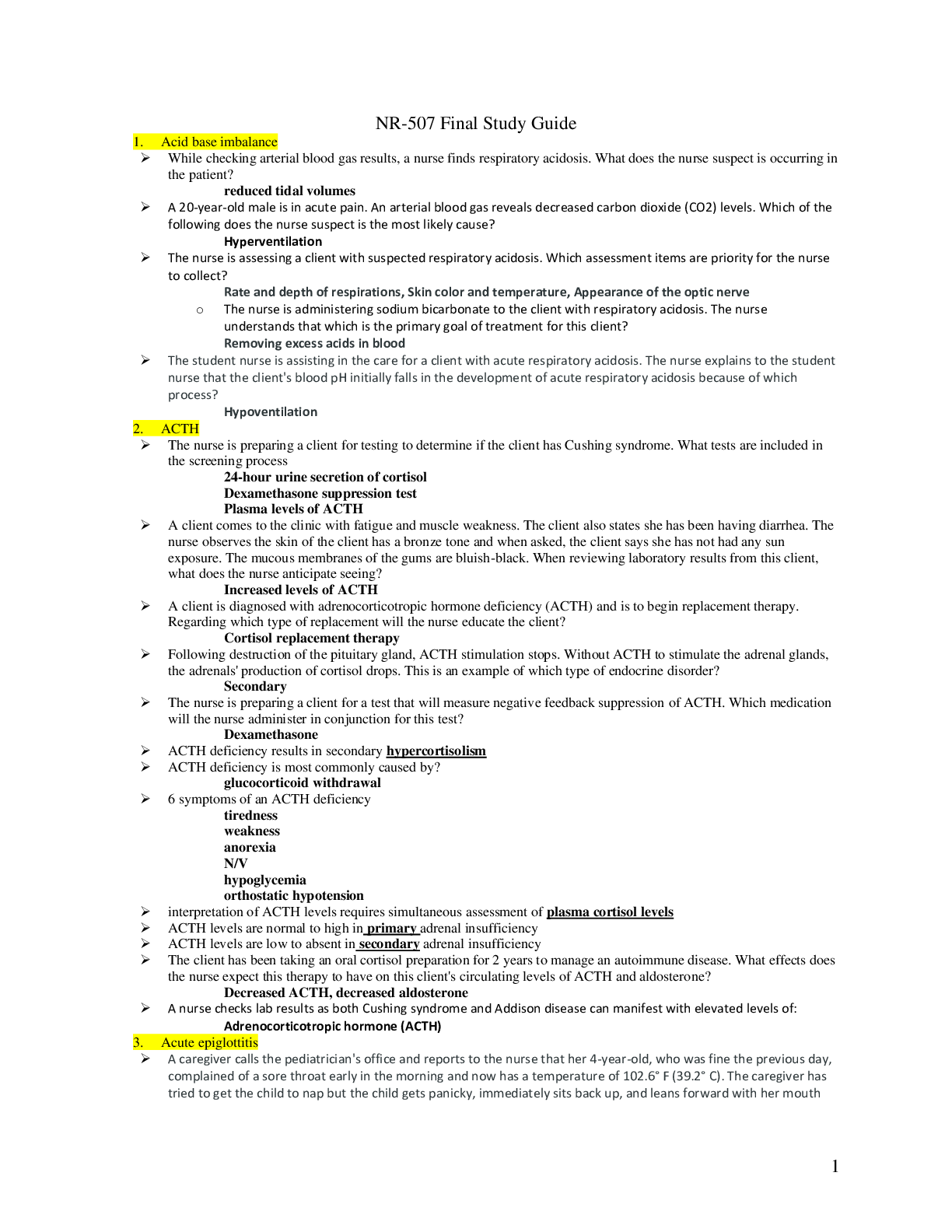
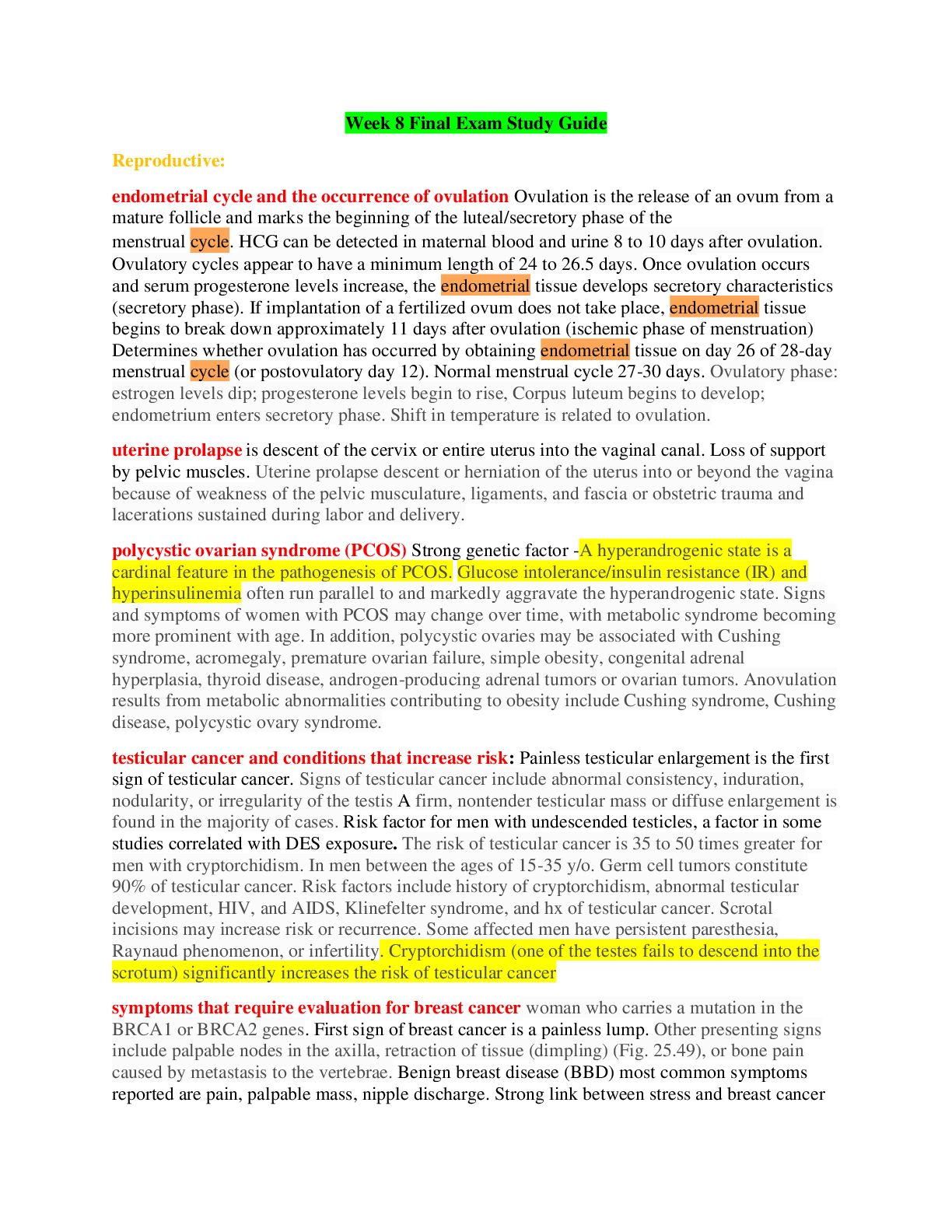
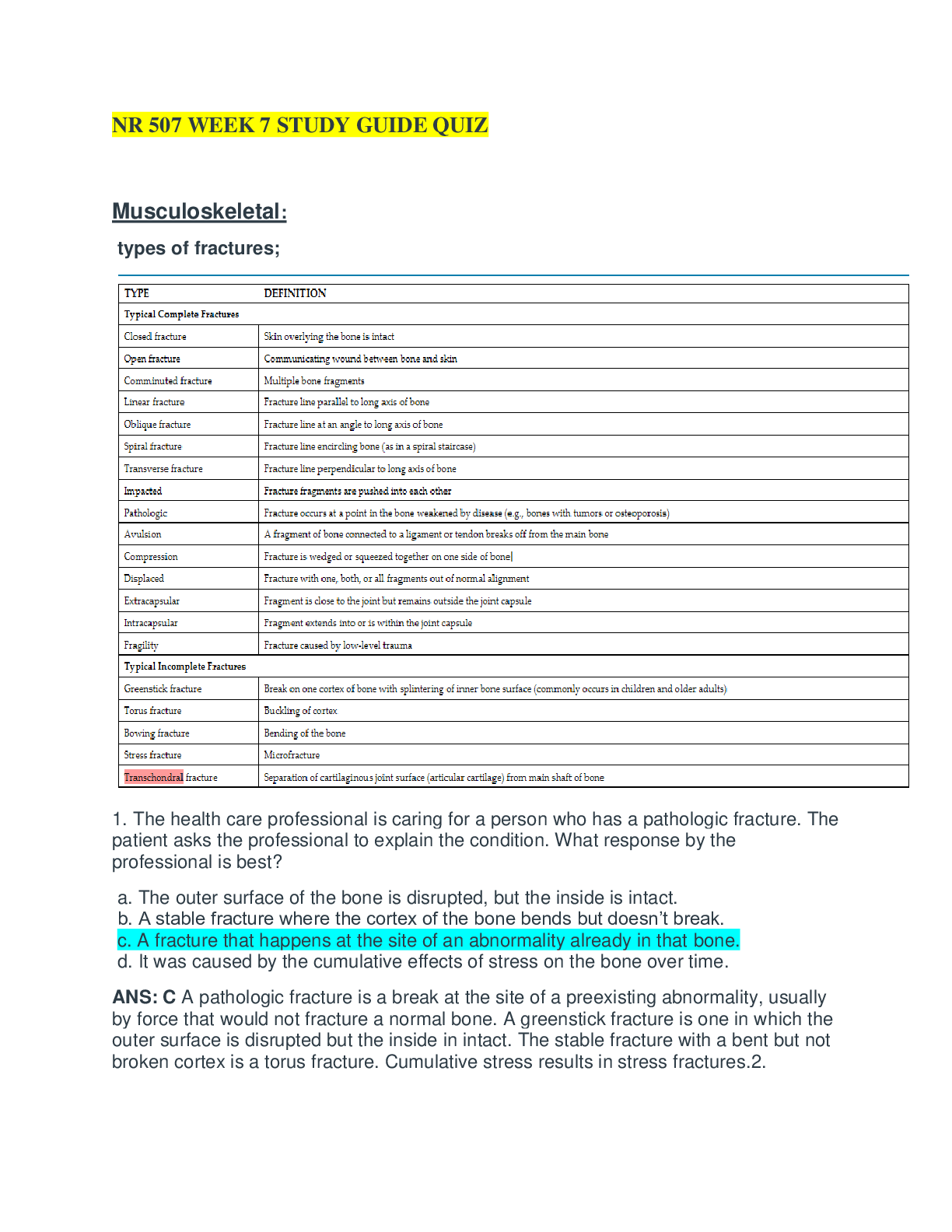
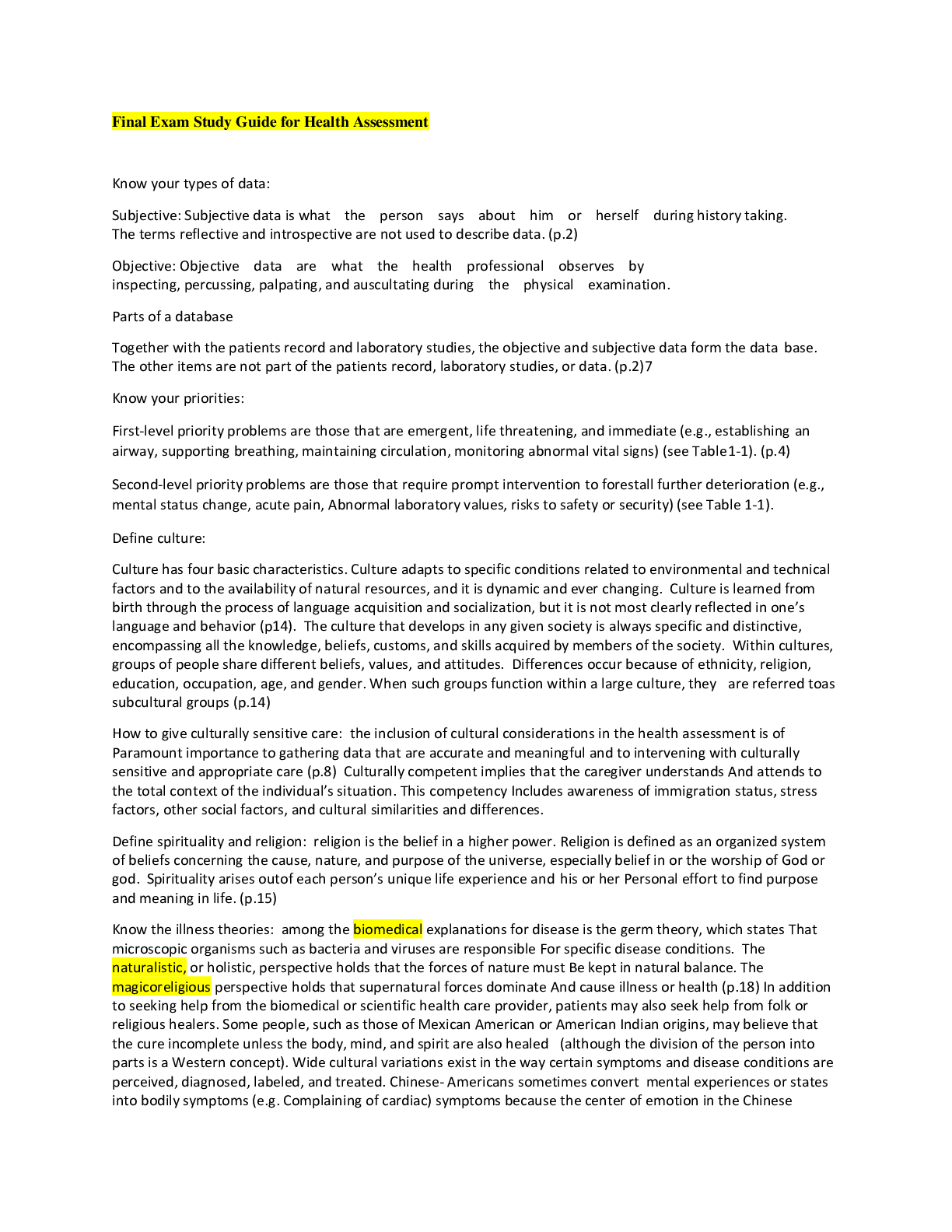

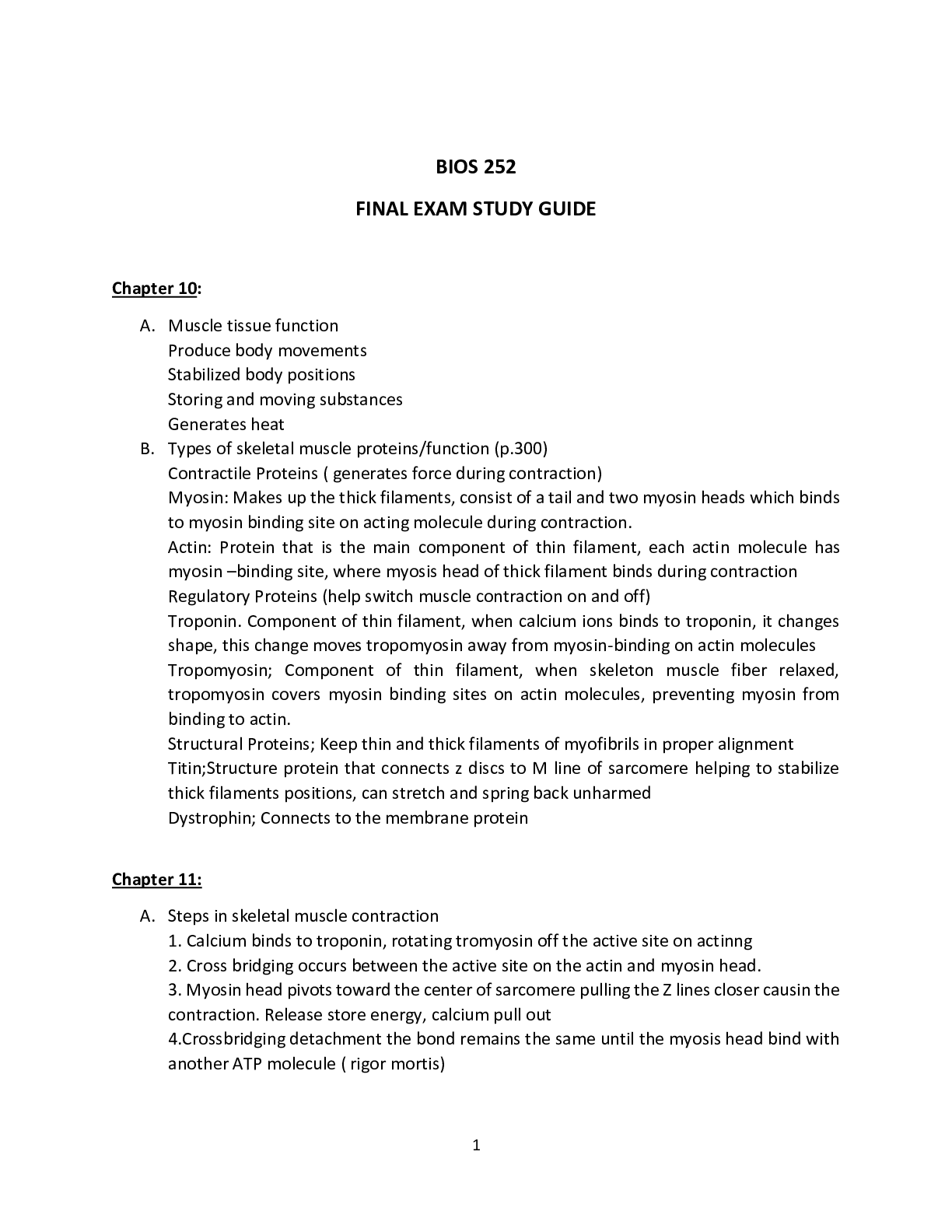
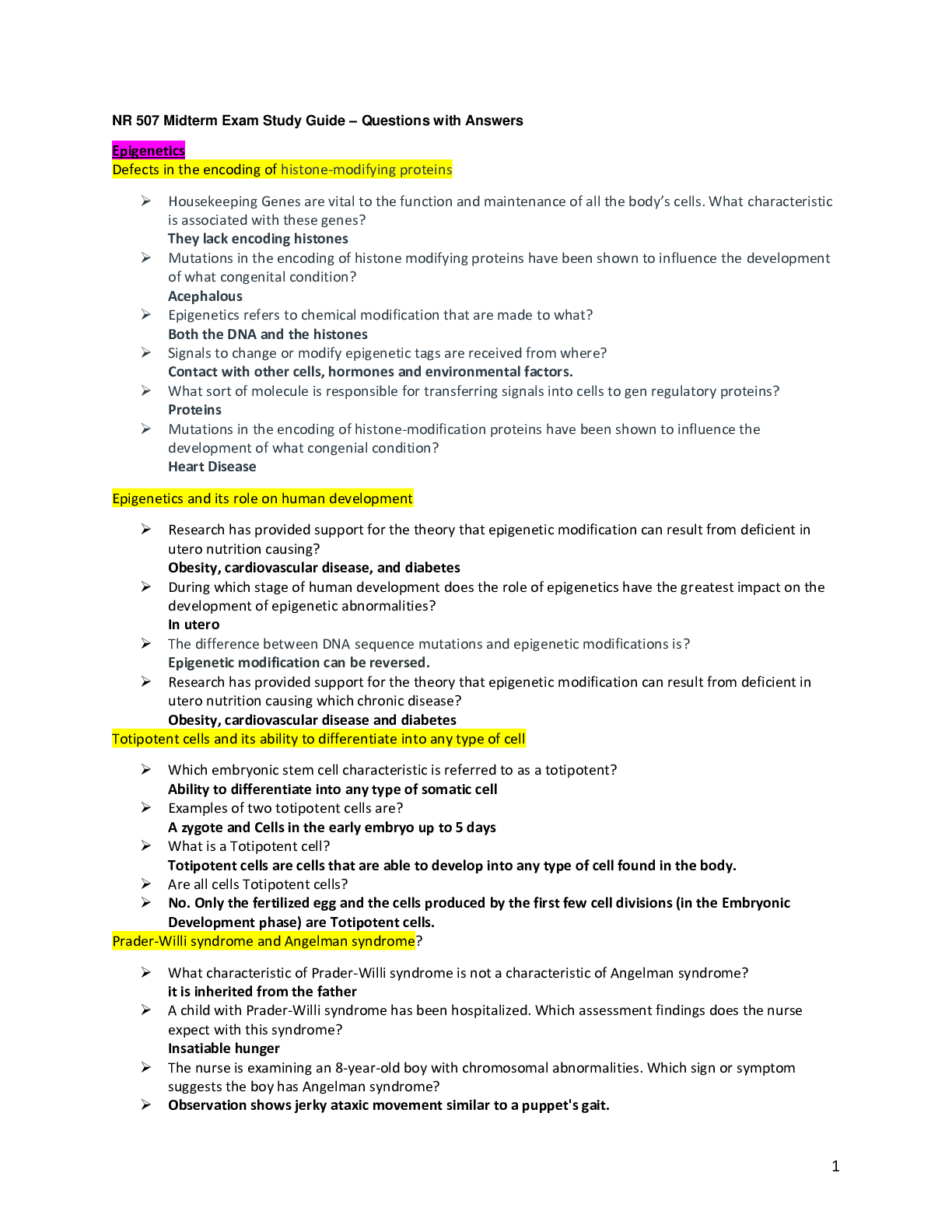

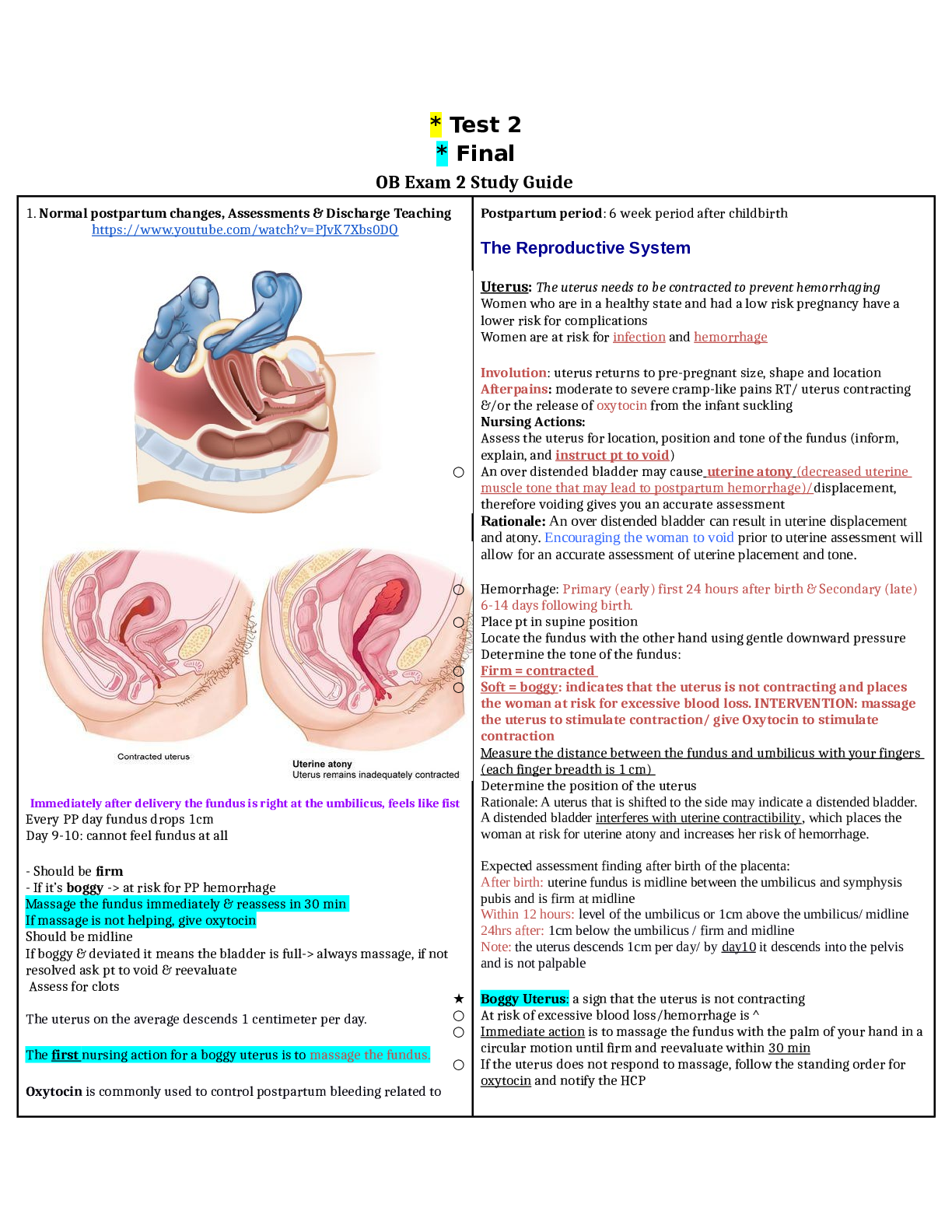
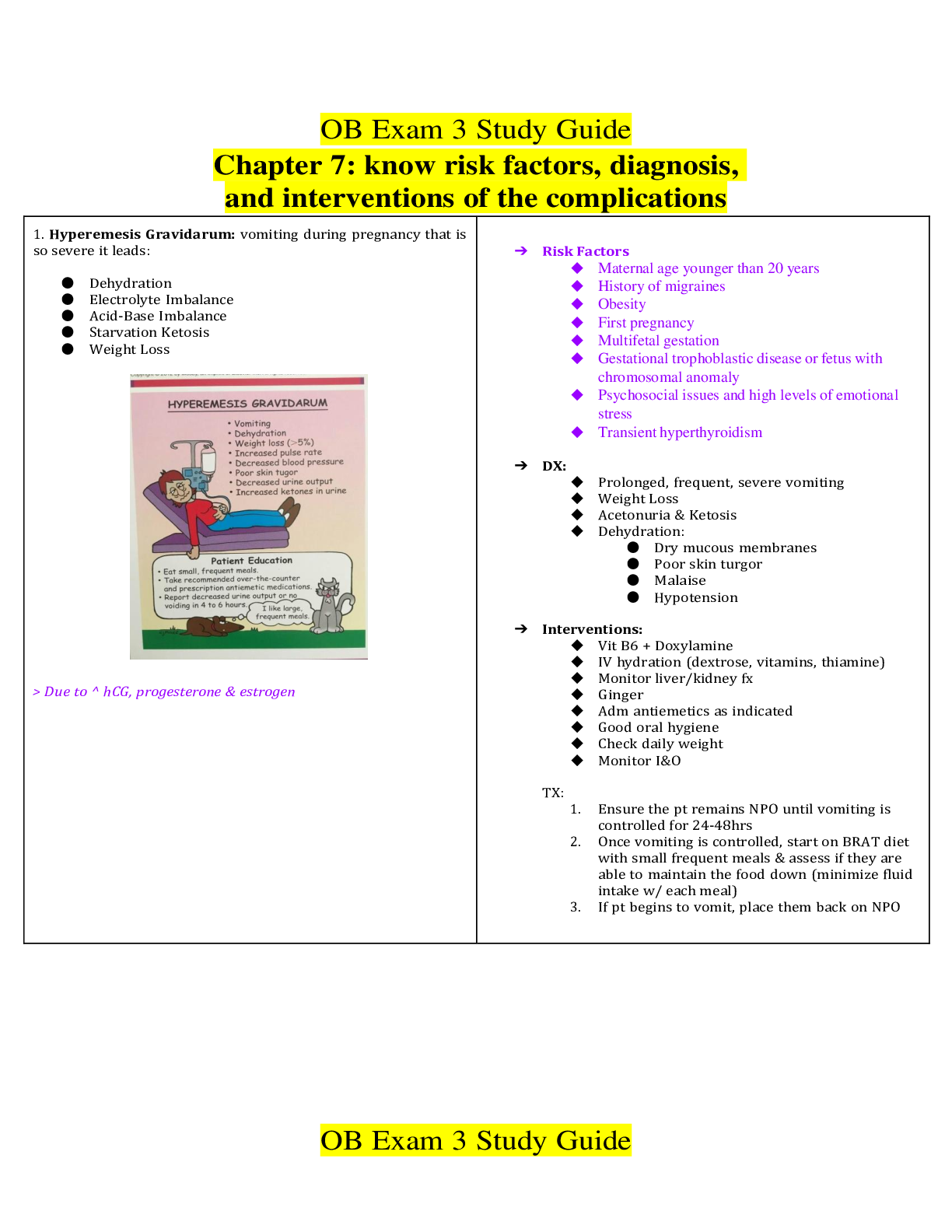
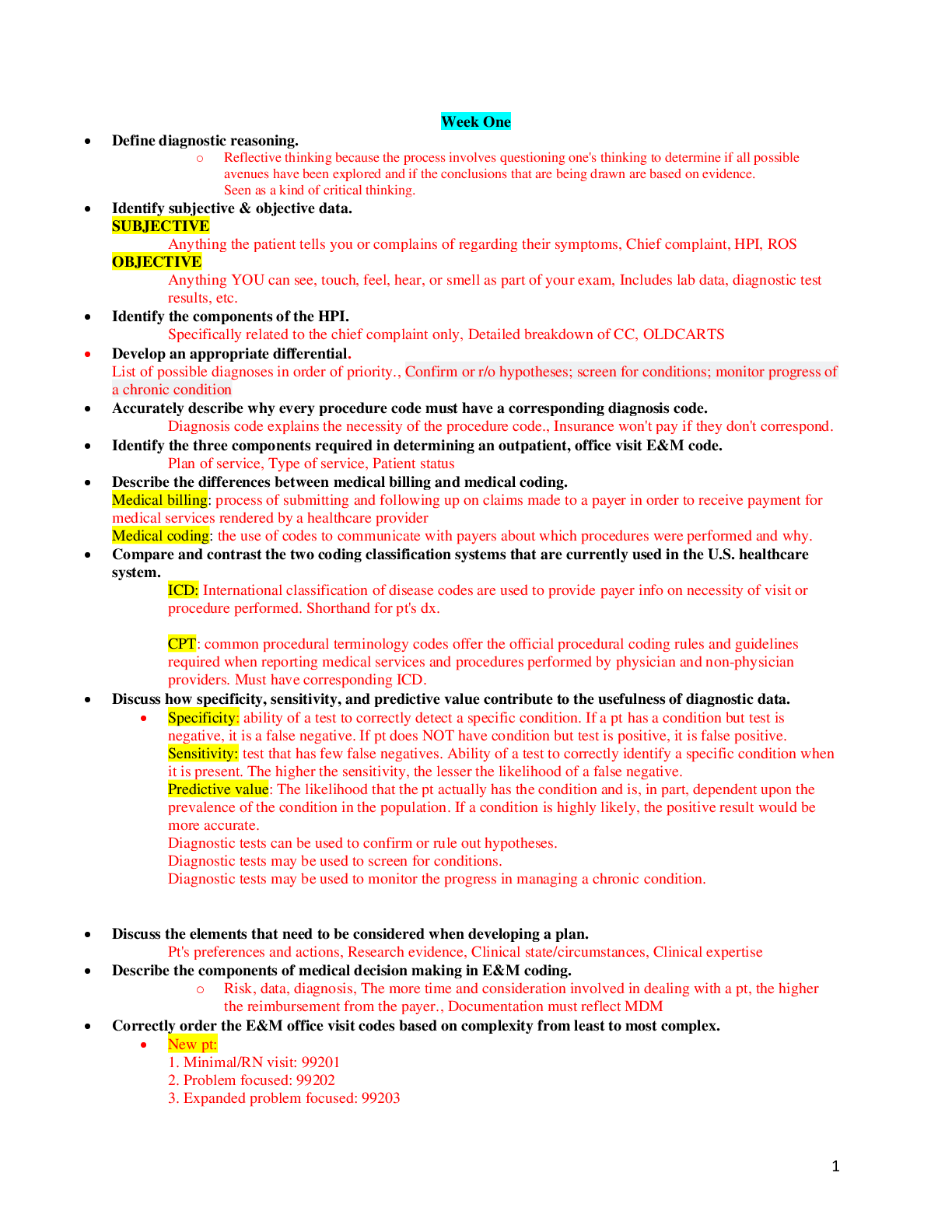

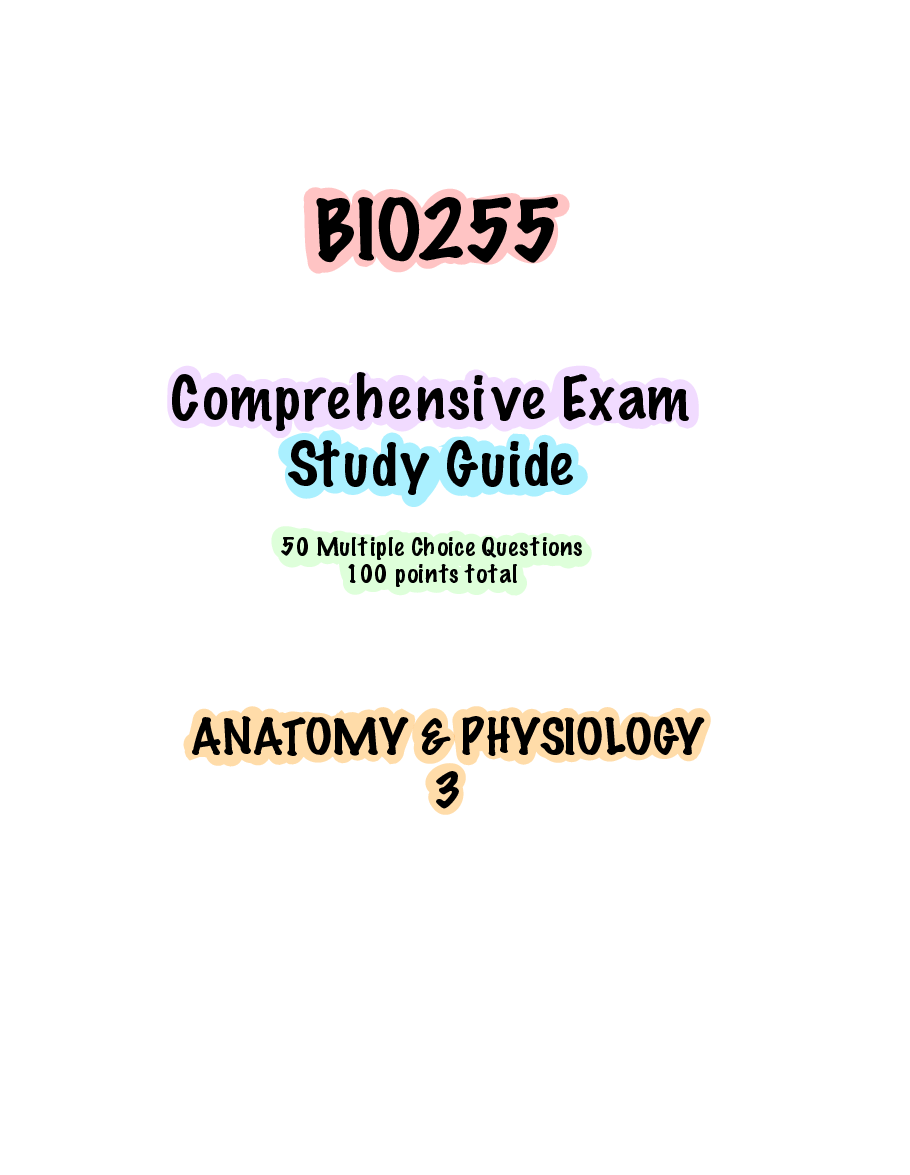

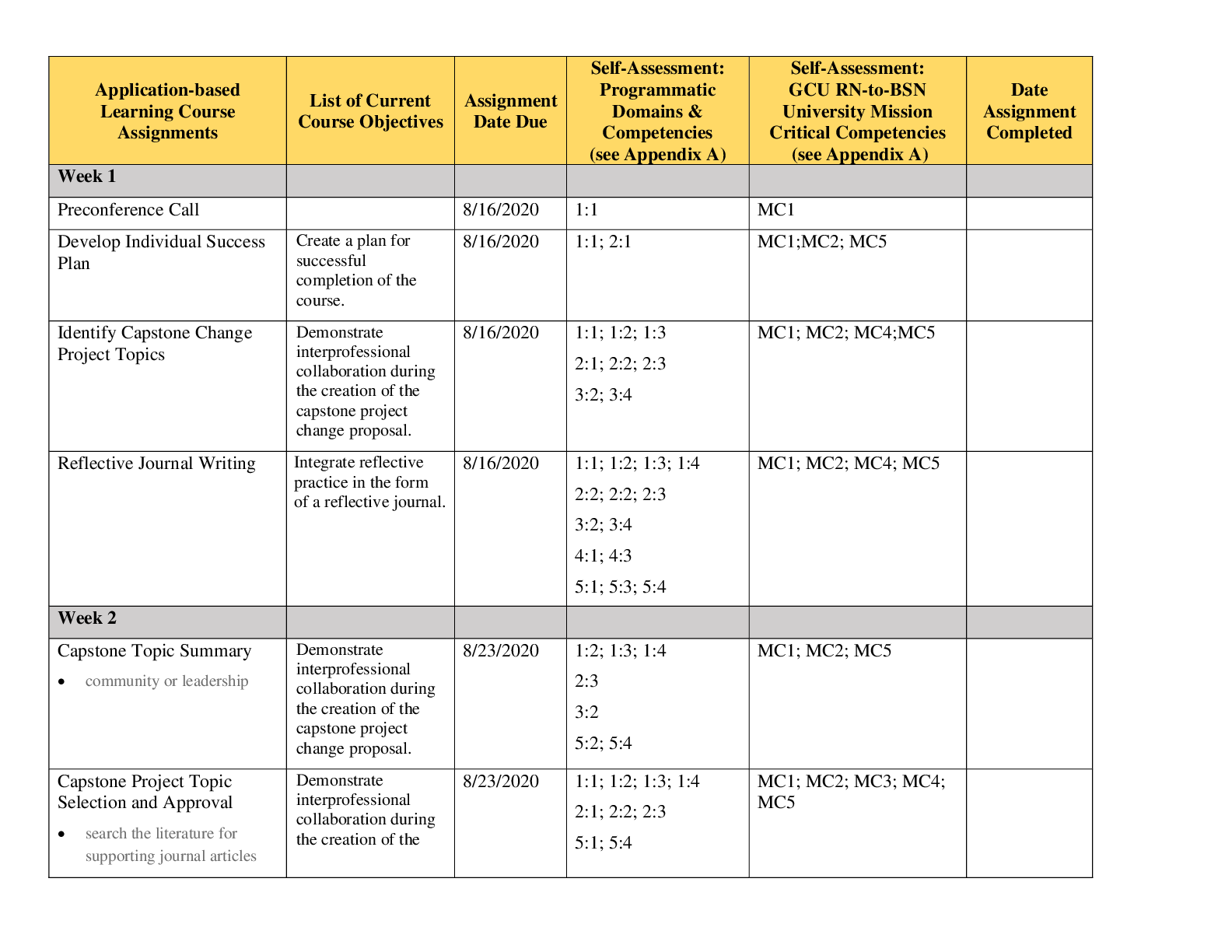






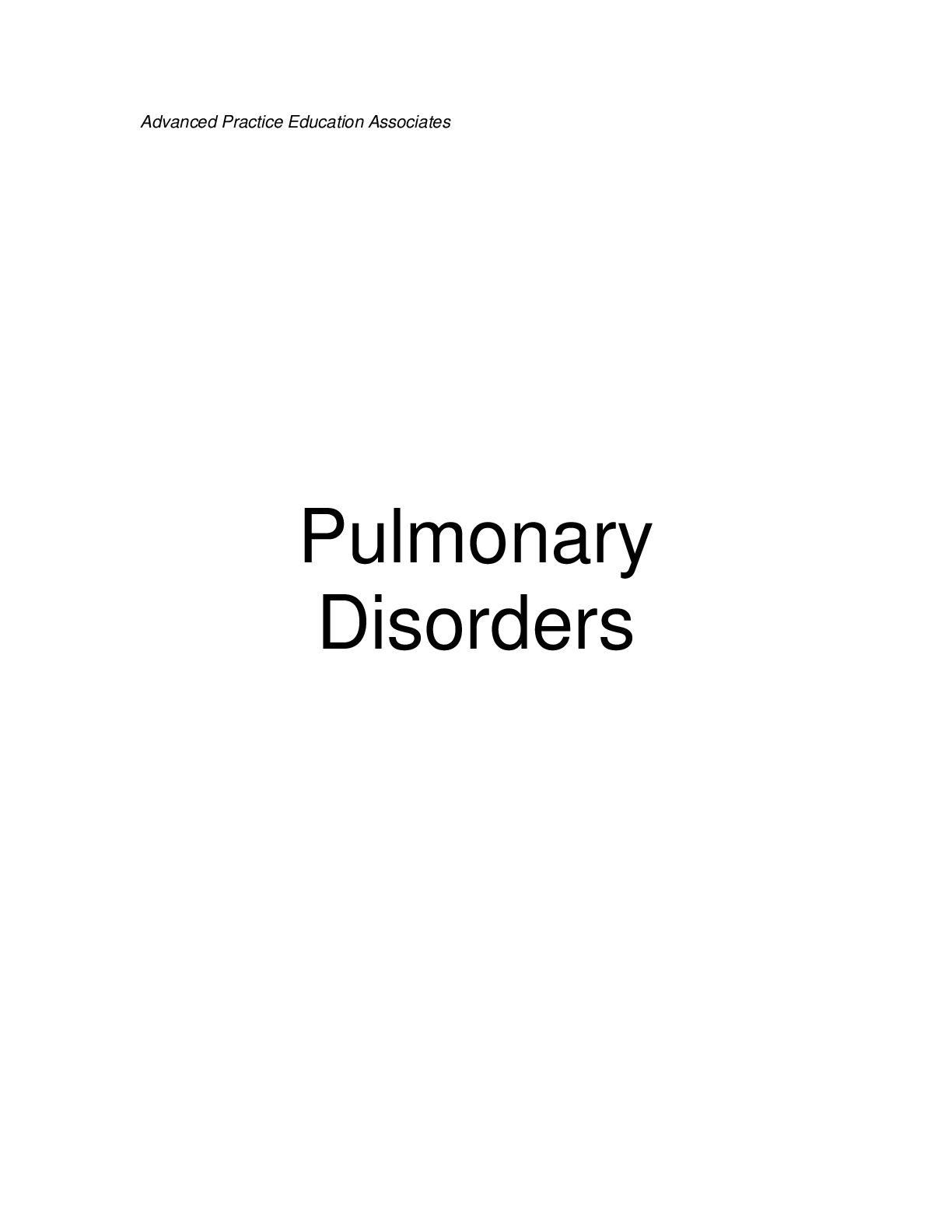
.png)





